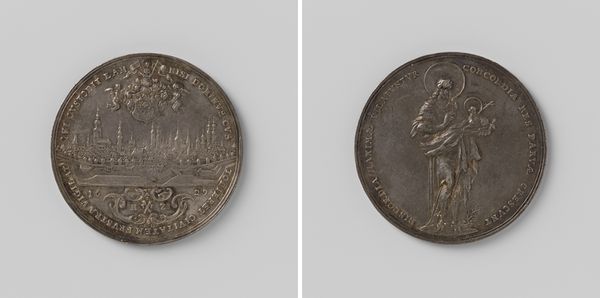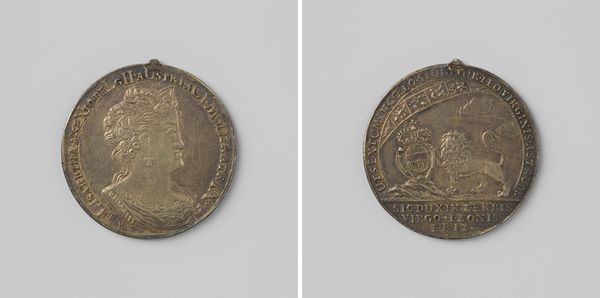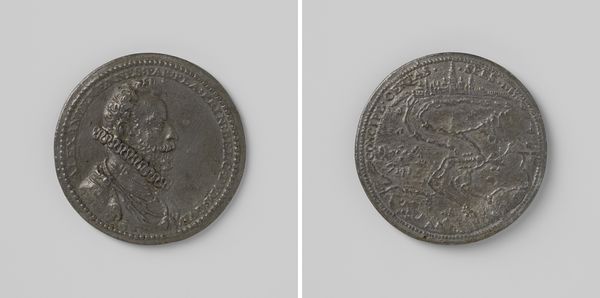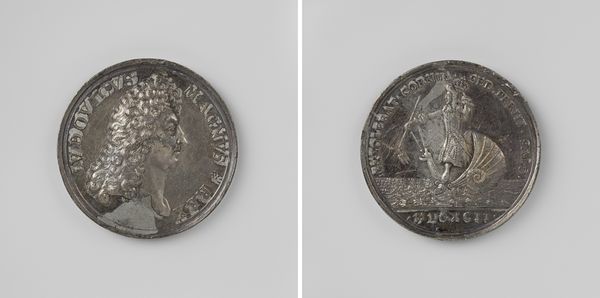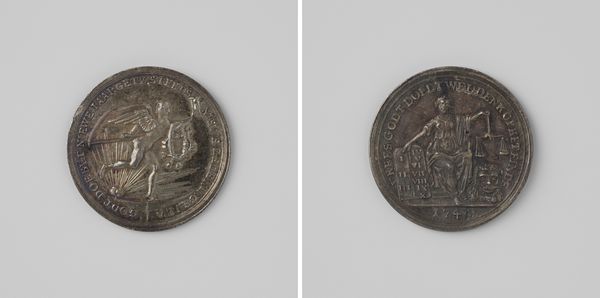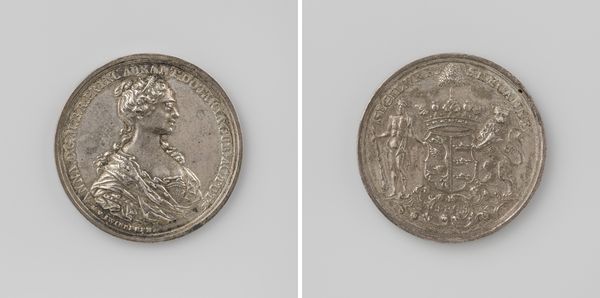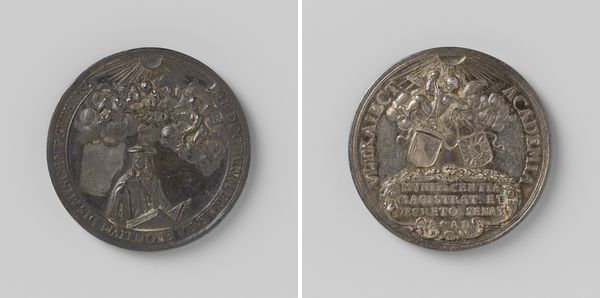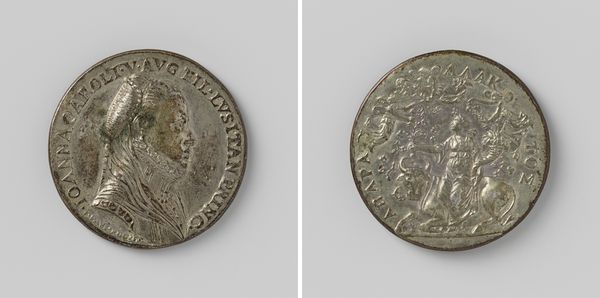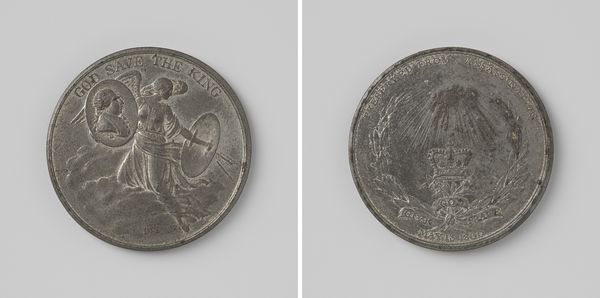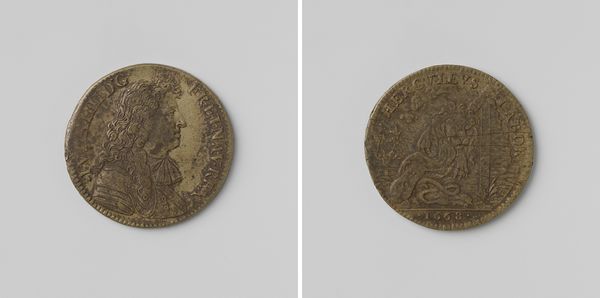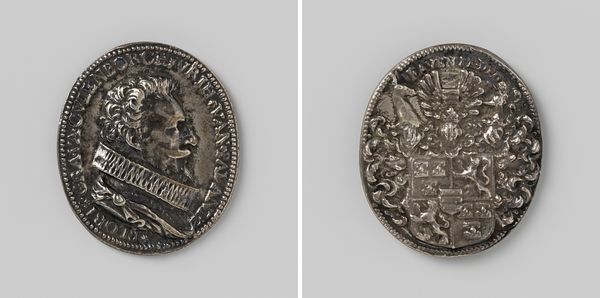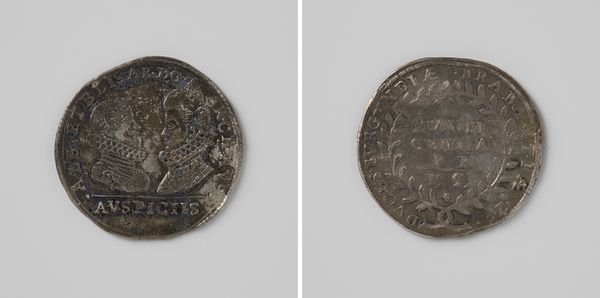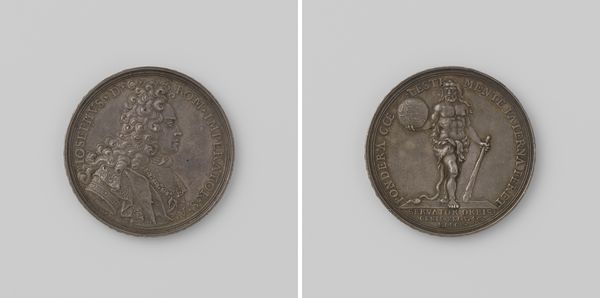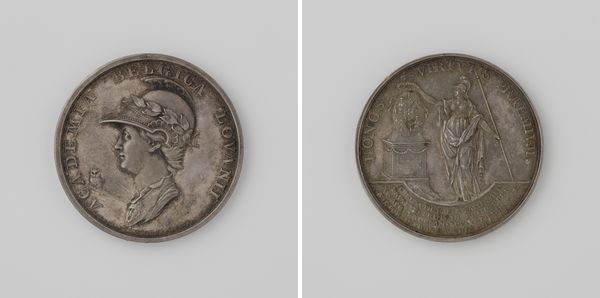
metal, sculpture
#
baroque
#
metal
#
sculpture
#
history-painting
Dimensions: diameter 2.5 cm, weight 5.31 gr
Copyright: Rijks Museum: Open Domain
Curator: Editor: Here we have Philippe Roëttiers’ medal, "Inhuldiging van Filips V te Brussel," crafted in 1702. Looking at the image, the wear on the metal, I find myself wondering about how the making of this piece reflects the political situation it represents. What does it tell us? Curator: A materialist perspective makes us ask about the very stuff of this medal. This wasn't painting or sculpture crafted from readily abundant or renewable materials, but one employing precious metals. What implications does that have, both regarding its purpose and its audience? What did it mean to mint a coin to memorialize an event? Editor: It implies that wealth was central. It also shows how the image, a symbol of royal power, could circulate. But was there a risk that, being so small and common, it would somehow cheapen the King's image? Curator: An excellent question. It challenges assumptions about value. Consider the labour involved in its production: the mining, refining, engraving, minting, and distribution. How were laborers in the silver mines connected to this moment of royal self-fashioning? That distance makes it both valuable and meaningless in a way, doesn't it? Editor: It does. It highlights the social cost behind royal display, making me consider who directly benefitted versus who was exploited through these types of commemoration pieces. It suggests an uneven distribution of benefits at play in the King's reign. Curator: Exactly. By tracing the material life of the object, we illuminate a more complex and less romanticized view of royal power, and how such an image can be used for celebration and oppression at the same time. The piece takes on more meaning as it represents so many facets and interpretations through its materials.
Comments
No comments
Be the first to comment and join the conversation on the ultimate creative platform.
